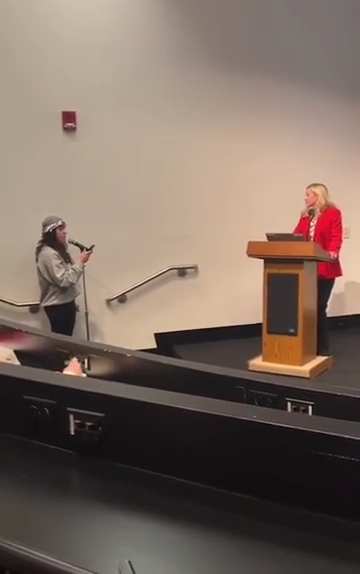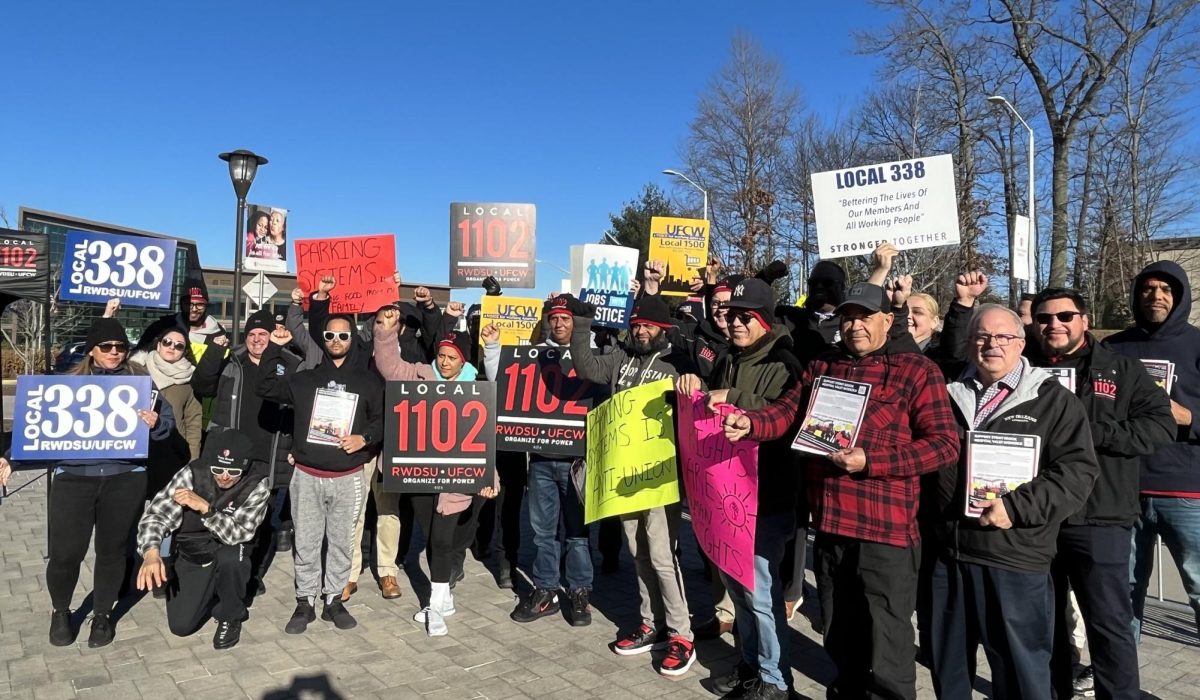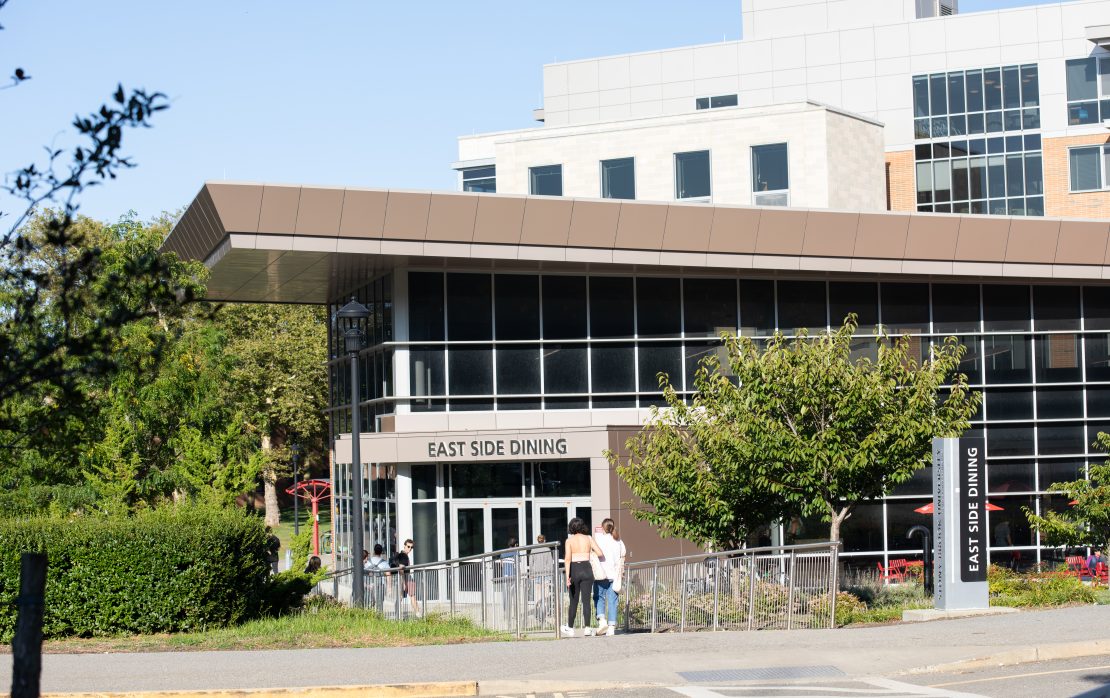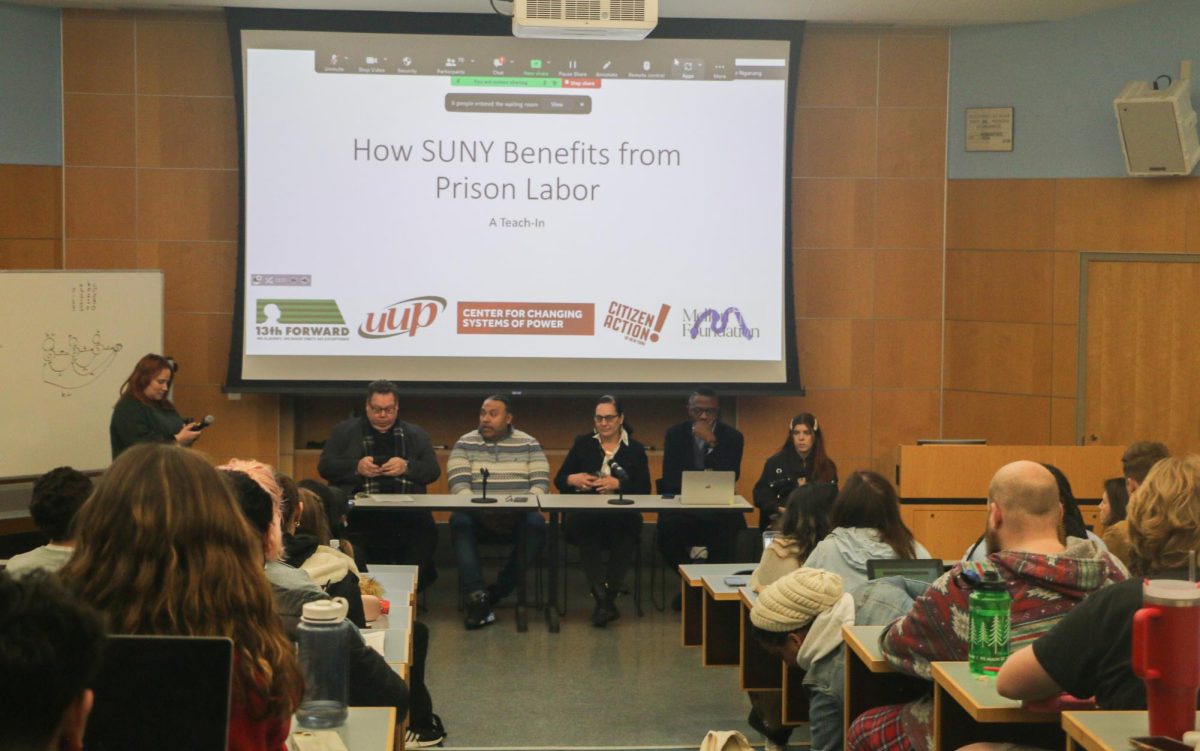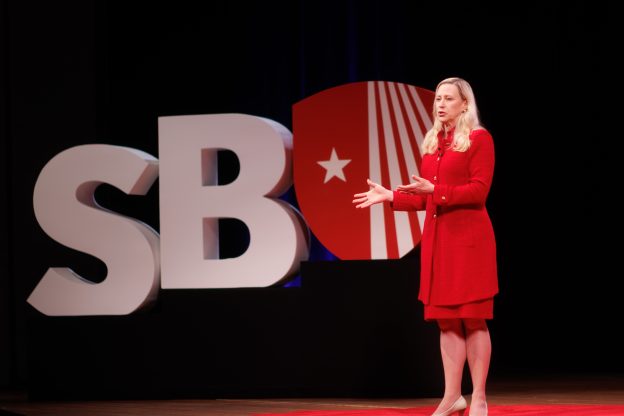
On Wednesday, Oct. 11, Stony Brook University President Maurie McInnis gave the annual State of the University address, her second since being appointed president of the University.
McInnis opened her speech by praising the progress and achievements made by Stony Brook in the past year, including being selected as the anchor institution for the New York Climate Exchange, receiving a record-breaking donation from the Simons Foundation and both the University and Stony Brook Hospital achieving high rankings from publications such as U.S. News and World Report and Healthgrades.
“It was all part of a plan, created in close collaboration with faculty, staff and administrators across the institution,” McInnis said. “Combined with a new and welcomed support from the government and institutions across New York.”
However, the University was not doing nearly as well a few years ago. In fact, its financial future, according to McInnis, was “alarming.” The University had struggled with lacking support from the New York State (NYS) government, declining enrollment rates and rising operating costs. In August 2020, TBR News Media reported that the school would be forced to use half of its emergency funds in order to offset a $109 million budget deficit.
Recently, things have been looking up for the school’s financial health. Most notably, the school received a $500 million dollar donation from the Simons Foundation, the largest unrestricted gift to a university in the history of American higher education.
“Our endowment stands today at around $400 million, nearly the smallest of any of the leading research universities in the [Association of American Universities],” McInnis said. “But as a result of this gift and the built-in state and gift-matching requirements, in seven years we will have added over a billion dollars to Stony Brook’s endowment.”
According to McInnis, accomplishing this goal will require fundraising an additional $200 million over the next three years from alumni, friends and supporters to take full advantage of the endowment matching plan incorporated by NYS. The program allows the four State University of New York (SUNY) university centers to receive one dollar from NYS for every two dollars donated to their endowments.
Other accomplishments mentioned by McInnis included the successful launch of the Simons STEM Scholars program, which offers high-achieving, underrepresented students in STEM majors full-ride scholarships. The program welcomed its first cohort last year.
Another point touched on in the speech was the record-high rankings Stony Brook achieved this year. In this year’s publication of the U.S. News and World Report college rankings, Stony Brook achieved the spot of #58 in national university rankings as well as #26 in the public colleges category. These rankings also placed Stony Brook above all other SUNY institutions. Stony Brook University Hospital also received favorable rankings, being named among the top 50 hospitals in the nation by Healthgrades.
The University also received its highest number of applicants ever this year, higher than any other SUNY institution and corresponding to the largest first-year class in the University’s history.
However, the University is also facing issues with aging faculty. According to McInnis, 40% of faculty will be eligible to retire within the next decade, putting the strain on the University to adjust hiring practices accordingly.
“This year, we are welcoming 55 new tenured and tenure-track faculty and have ongoing searches for 78 more,” McInnis said. “We will continue to budget for additional hires as we renew our faculty.”
The University has also launched a search to fill a new high-level administrative role: the chief innovation officer. Collaborating closely with faculty, deans and the vice president of research, the chief innovation officer will oversee all economic development efforts conducted by the University.
To Devin Lobosco, president of the Undergraduate Student Government (USG) and a senior double majoring in biochemistry and women’s and gender studies, the address sparked confidence in the future of Stony Brook.
“I think it was really beautiful and optimistic to get to look towards the future a little bit,” Lobosco said. “I’m going to be graduating after this year, but I’m really excited to be able to come back as an alumn[us] and just continue to see the university do bigger and better things and really be a place we can all be part of.”
Peter Joyce, an at-large senator for USG and a senior double majoring in political science and history, echoed Lobosco’s comments.
“I was really impressed,” Joyce said. “It’s like a huge list of accomplishments, but [it also] really shows how Stony Brook can really move up in its standing as a university within the country.”
During her speech, McInnis also discussed a desire to expand the aforementioned Simmons STEM scholars program, something that the school’s recruitment staff have already begun seeing as they hope to draw in the next cohort of students.
The program’s Recruitment, Special Events & Family Outreach Coordinator Brady Brick said that the program will be able to attract more students as Stony Brook’s prestige improves.
“I think as Stony Brook continues to grow, it’s going to become a more lucrative [school] for high-[talent] students,” Brick said. “Especially in the academic and research areas, and with that prestige, we’ve just been able to pull and [attract] talented students.”









